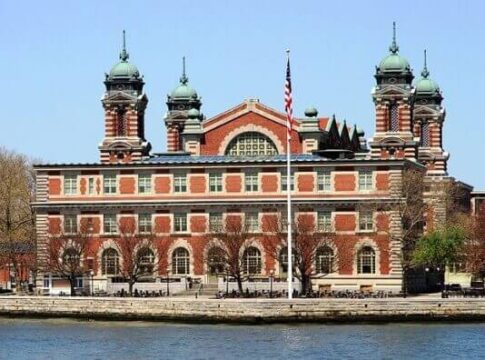For over 60 years, Ellis Island was the front door to the United States. It is the place where over 12 million people took their first steps toward a new life, a symbol of hope that defines the American spirit. But behind the romantic stories and family legends, the island holds a history that is far more complex, surprising, and sometimes darker than we realize.
The Myth of the Name Change
If you ask an American family about their history, you will often hear a variation of the same story: “Our name was changed at Ellis Island. The inspectors couldn’t pronounce it, so they just wrote down something English.” It is a powerful story about the immigrant experience, but historians say it is almost entirely a myth.
Ellis Island officials did not write down names as people arrived. Instead, they worked off of ship manifests—passenger lists that had been created by the steamship companies back in Europe before the ship ever set sail. The inspectors’ job was simply to verify that the person standing in front of them matched the name already written on the list.
If a name was changed, it usually happened years later. Immigrants often changed their own names to assimilate, fit in, or simplify spelling for their new American neighbors. The tired inspector with a pen, arbitrarily renaming people, is a character from movies, not history.
From Pirates to Immigrants
Before it was the “Island of Hope,” Ellis Island had a much grimmer nickname: “Gibbet Island.” In the early 1800s, long before the immigration station was built, the island was used as a site for public executions.
It was named after the “gibbet,” or gallows, used to hang criminals. The island was particularly known for the execution of pirates captured in the harbor. For decades, the sight of the island didn’t inspire dreams of freedom; it served as a terrifying warning to sailors and criminals entering New York.
The First Person Through the Door
On January 1, 1892, the new federal immigration station officially opened its doors. The very first person to step off the boat and be processed wasn’t a wealthy merchant or a political exile. It was a 17-year-old girl from County Cork, Ireland, named Annie Moore.
Annie had traveled across the Atlantic with her two younger brothers to reunite with their parents, who were already living in New York. As the first registrant, she was presented with a ten-dollar gold coin by the officials—a small fortune at the time. Her statue still stands on the island today, a permanent reminder of the millions who followed in her footsteps.
The Island That Grew
The Ellis Island you see today is not the same island that existed naturally in the harbor. Originally, it was a tiny slip of land, barely 3.3 acres in size. As the flood of immigrants grew, the facility needed more space than the natural geography could provide.
Through a massive engineering project, the government expanded the island by over 800 percent. Using landfill—including dirt from the excavation of New York City subway tunnels and ballast from incoming ships—they grew the island to a sprawling 27.5 acres. The ground that millions of ancestors walked on was, in many ways, as man-made as the buildings themselves.
A Prison in the Harbor
While we remember Ellis Island as a place of entry, it also served as a place of confinement. During both World War I and World War II, the island’s purpose shifted dramatically. It became a detention center for “enemy aliens”—nationals from countries the U.S. was fighting against.
Instead of processing hopeful new citizens, the island held suspected spies, saboteurs, and immigrants whose loyalty was questioned. It was a stark contrast to its original mission. The very facilities designed to welcome the world were used to protect the nation from it, highlighting the thin line between welcoming strangers and fearing them.
A Complex Legacy
Ellis Island is more than just a museum or a monument. It is a place where the best and worst of history overlap. It was a site of execution and a site of salvation; a place of bureaucracy and a place of dreams. Understanding these hidden facts doesn’t diminish its importance; it makes the site more real, reminding us that the path to a new life was never simple.


